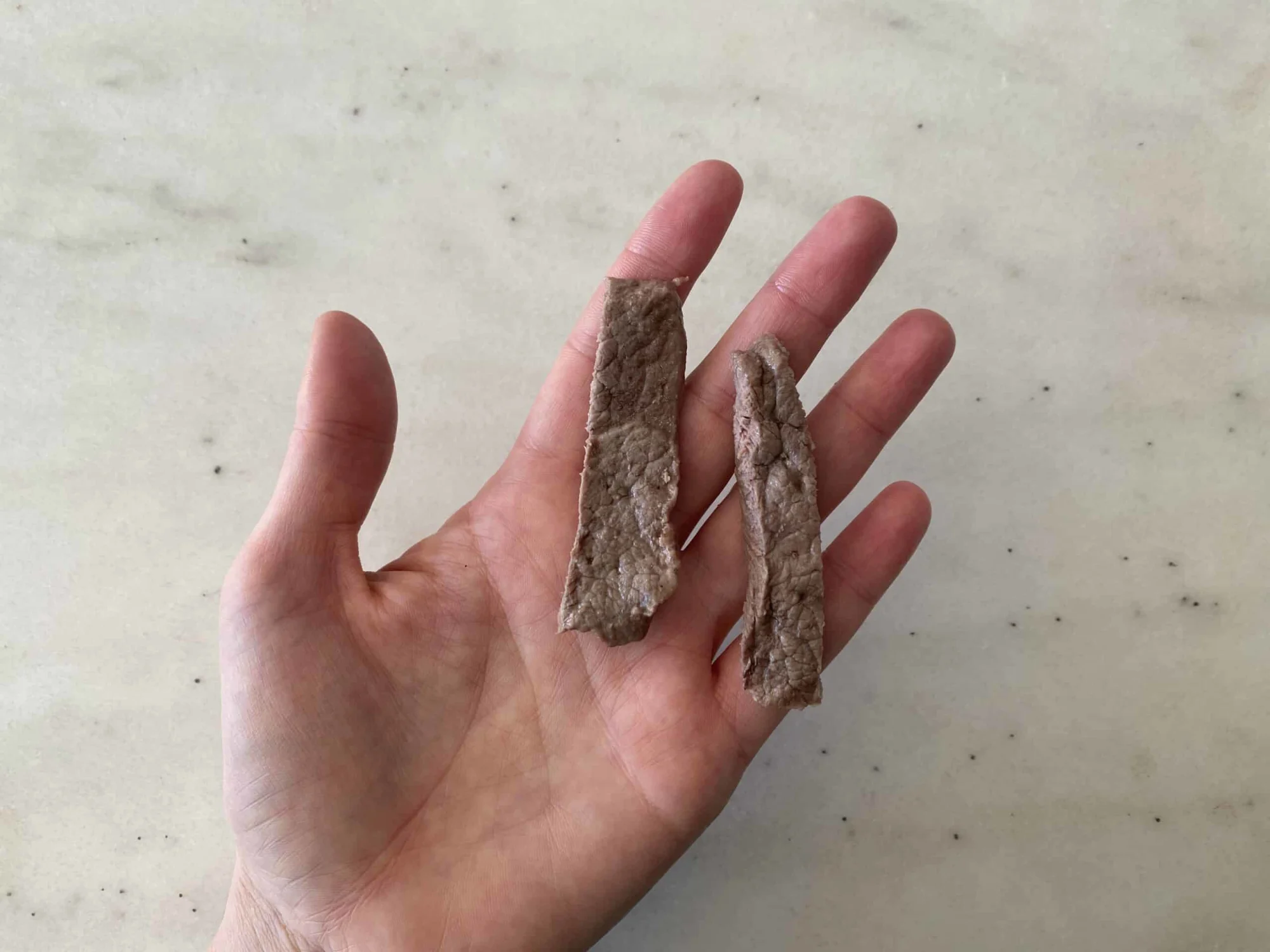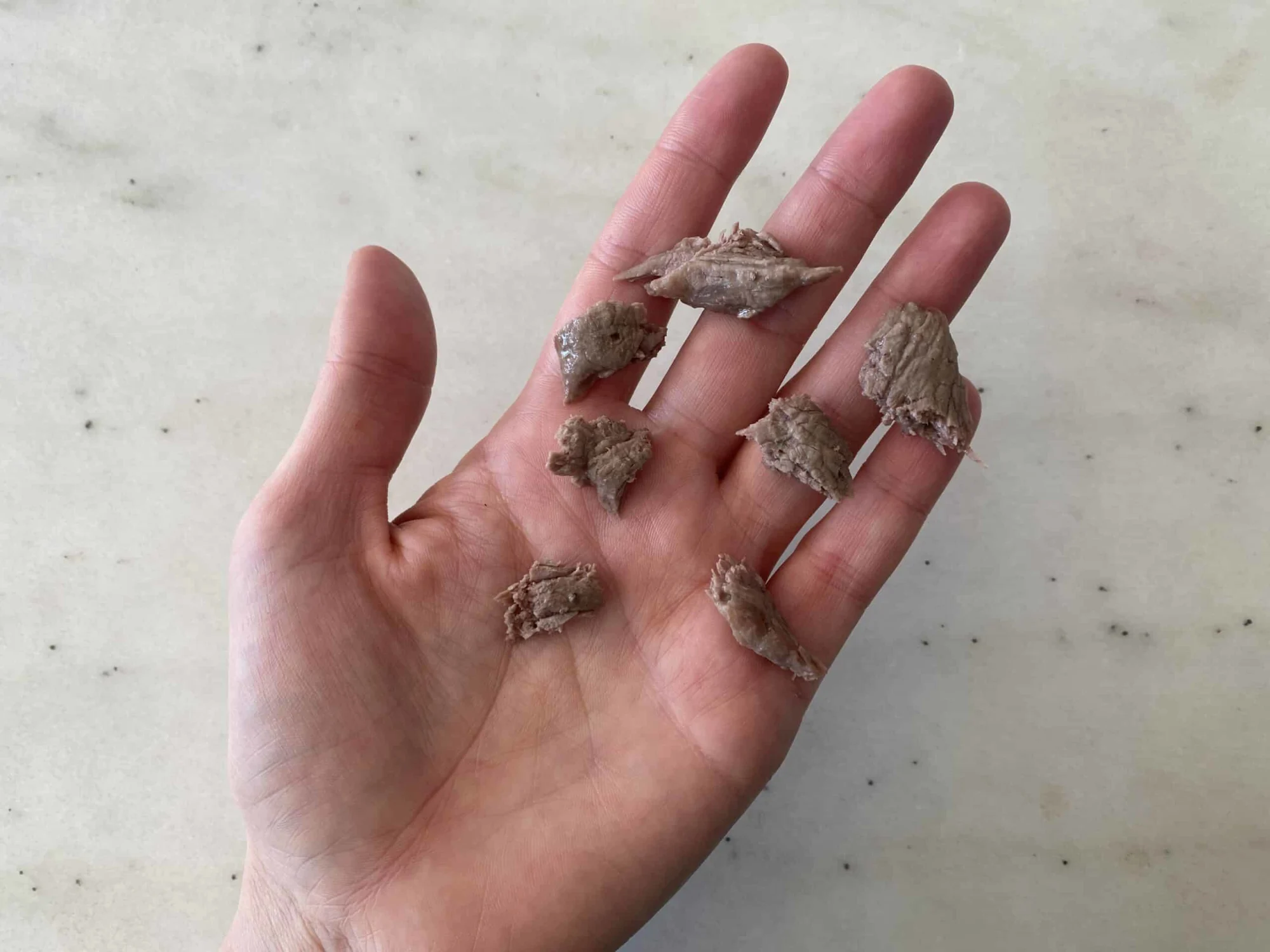Access our First Foods® Database in the Solid Starts App.
Learn moreSteak
Meat
Age Suggestion
6 months
Iron-Rich
Yes
Common Allergen
No

When can babies have steak?
Steak may be introduced as soon as baby is ready to start solids, which is generally around 6 months of age. For information on different cuts and preparations, check out brisket and ground beef.
The word “steak” describes cuts of meat from a variety of animals (deer, elk, lamb, and fish to name a few), but most often in reference to cow. Beef steaks come in different cuts, some with the bone-in and others boneless. Texture varies, too. Filet mignon, ribeye, and sirloin steak are tender, while flank, rump, and skirt steak are much tougher.
How do you serve steak to babies?
Every baby develops on their own timeline, and the suggestions on how to cut or prepare particular foods are generalizations for a broad audience.
6 months old +:
Offer steak on the bone with big chunks of meat and fat removed or offer strips of well-done steak cut into pieces the size of two adult fingers pressed together. Before offering to baby, remove any loose chunks of meat or pieces of fat. Baby will mostly just suck and gnaw on the meat. If baby succeeds in biting off a too-big piece of meat, take a deep breath, stay calm, and give your child a chance to work with the food. In most cases, if the piece of food is too big, babies spit it out or the gag reflex helps thrust it forward and out of the mouth. If your child needs assistance getting the piece of food out of the mouth, gently tilt them forward and put your hand beneath their chin to indicate they can spit it out. Sticking your own tongue out can help teach babies how to spit. Do not put your fingers in baby’s mouth, as this can push food further down the throat, increasing the risk of choking.
9 months old +:
This is a good time to move down in size to finely chopped or shredded steak as many babies around this age begin to aggressively stuff food into their mouths. If baby is not yet able to pick up small pieces of food, try folding minced meat into scoopable foods like mashed potatoes, polenta, or mashed root vegetables.
18 months old +:
Once you feel the child has more mature eating skills (moving food to the side of the mouth to chew, chewing well before swallowing, and putting an appropriate amount of food in their mouth and not over-stuffing), offer bite-sized pieces of meat. This is a great time to encourage the use of utensils, which has the added benefit of slowing the child down while eating. Try pre-loading a single piece of steak on a utensil and handing it to the child. If you’d like to offer a larger slice of steak for biting and tearing practice, this is also a good time to do so. Just remain within an arm’s reach at all times and watch the child very closely, as steak is a choking hazard for children and adults alike.


One way to cut and serve steak for babies 6 months +
Videos
Is steak a choking hazard for babies?
Yes. Steak is firm and challenging to chew, qualities that increase the risk of choking. To reduce the risk, prepare and serve steak in an age-appropriate way. Note that pieces of meat can sometimes move too slowly down the esophagus (our food pipe). While this can feel scary and uncomfortable, the individual can typically still breathe. If you think a piece of food is causing discomfort in a child’s esophagus (they may be crying and struggling to swallow), offer a drink from an open cup, bottle, or nursing session. If that fails to alleviate the situation, call emergency services. As always, make sure you create a safe eating environment and stay within an arm’s reach of your baby during meals. For more information on choking, visit our sections on gagging and choking and familiarize yourself with the list of common choking hazards.
Is steak a common allergen?
No. Steak, as a form of beef, is not a common food allergen, although allergic reactions to beef have been reported. Certain tick bites (mainly the Lone Star tick in the continental United States, but other ticks in different parts of the world), are associated with the development of an allergy to galactose-alpha-1, 3-galactose (“alpha gal”), a sugar which is present in all non-primate mammalian meat. This results in a delayed allergic reaction 3-8 hours after red meat, such as beef, is consumed. However, some individuals with alpha gal allergy also react to small amounts of the sugar present in dairy products, gelatin, or organ tissues (such as liver) from mammals. Alpha gal allergy is more prevalent in the southeastern United States, but is starting to become more common in other areas as the geographic distribution of the Lone Star tick expands. While uncommon, individuals with a dairy allergy may also have a slightly increased risk of being sensitive to beef. However, studies suggest that in individuals with confirmed allergy to beef, a large percentage are also allergic to cow’s milk.
As you would when introducing any new food, start by offering a small quantity for the first few servings and watch closely as baby eats. If there is no adverse reaction, gradually increase the serving size over time.
Is steak healthy for babies?
Yes. Steak is rich in protein and often fat, both of which are essential in fueling baby’s growth and development. It is also rich in other essential nutrients, such as iron, choline, selenium, zinc, and vitamins B6 and B12. Together, these nutrients support growth, brain development, energy to play and explore, healthy red blood cells, taste perception, immune health, hormone function, metabolic processes, and more. Babies need increasing amounts of iron starting at the 6-month mark, when their reserves become depleted, and steak offers a great source of dietary iron at this stage of baby’s life.
When can children eat steak that's still pink?
Steak that is slightly pink in the middle may be offered to children as young as 6 months of age as long as the internal temperature of the cooked meat has reached 145 F (63 C) and the meat is allowed to rest for a few minutes before it is served. This cooking method reduces the risk of foodborne illness. Raw, rare, and medium-rare steaks pose an increased risk of foodborne illness regardless of age, but babies and young children are more susceptible and more at risk of serious illness.
Which cut of steak is best for babies?
Whichever cut of steak is most accessible to your family is what is best for baby, as long as baby is ready for solids and the meat is prepared in an age-appropriate way. T-bone, ribeyes, and other cuts of steak still attached to a sturdy bone are great choices. Once the loose pieces of meat or fat are removed, the bone’s firm texture and long shape can act like a teether, helping babies learn the boundaries of the mouth.
Our Team
Written by
Expert Tips Delivered to Your Inbox
Sign up for weekly tips, recipes and more!
Copyright © 2025 • Solid Starts Inc







